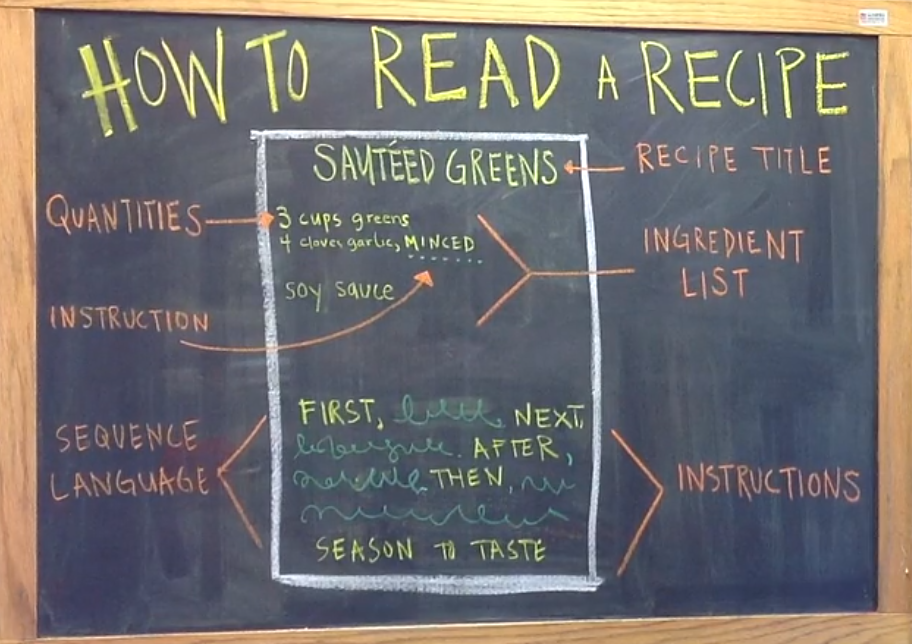
Lesson:
6/9
How to Read a Recipe
Place of Learning:
Duration:
20 - 30 Min
Summary:
Have you ever read a recipe only to still not know where to start? Have you ever gotten halfway through cooking something and realized you missed a key step? These are common setbacks in the kitchen that can be avoided with purposeful recipe reading. This activity will help you learn how to read a recipe like a professional chef!
Student Learning Goals & Objectives:
- Understand the difference between precise recipes and flexible recipes.
- Practice critical thinking skills by analyzing recipes.
Download Lesson Materials
Teaching Notes:
- This activity can be extended by practicing with another recipe that the student chooses. They can identify the recipe as either a flexible or precise recipe, note any hidden instructions in the ingredients list, note all sequence language, and finally, create their version of the recipe that includes all the information they need.
- Students can prepare the SautéedGreens recipe. After cooking and eating the greens, students can consider if they would make any changes to the recipe based on their experience. Finally, students can revise their copy of the recipe to reflect their preferences e.g., reduce the amount of soy sauce and double the amount of sesame oil.
- Some lesson plans are formatted as a fillable PDF so that students can answer the questions and return the document as if it were a worksheet. We recommend testing this functionality with your technology as it varies by device and operating system. If it does not work for you, consider using a google form or having students answer the questions in a new document and submitting their answers to you that way.
- If students are completing this lesson as part of the kitchen curriculum Cooking with Curiosity: Challenging Perfection with Reflection this lesson is 1.6: The sixth lesson of Unit 1.




